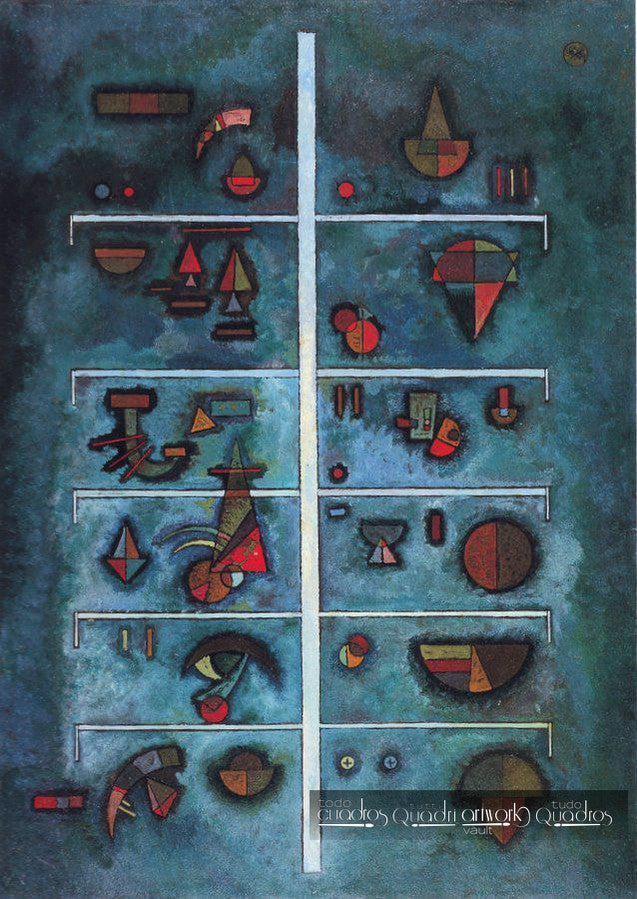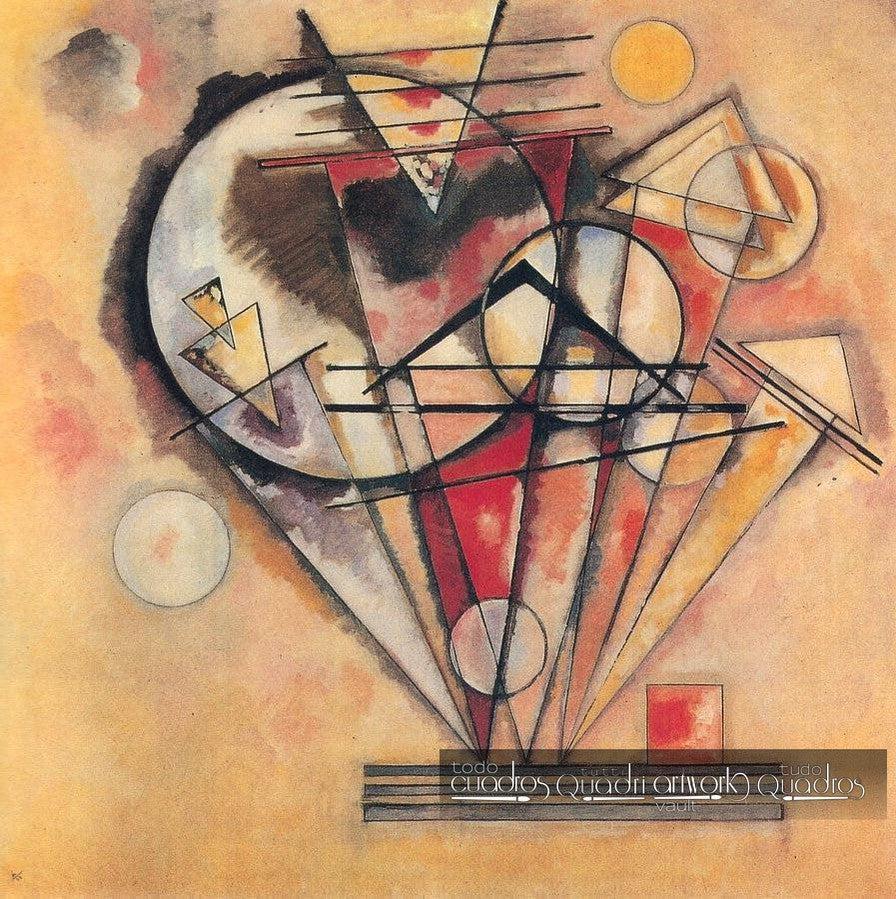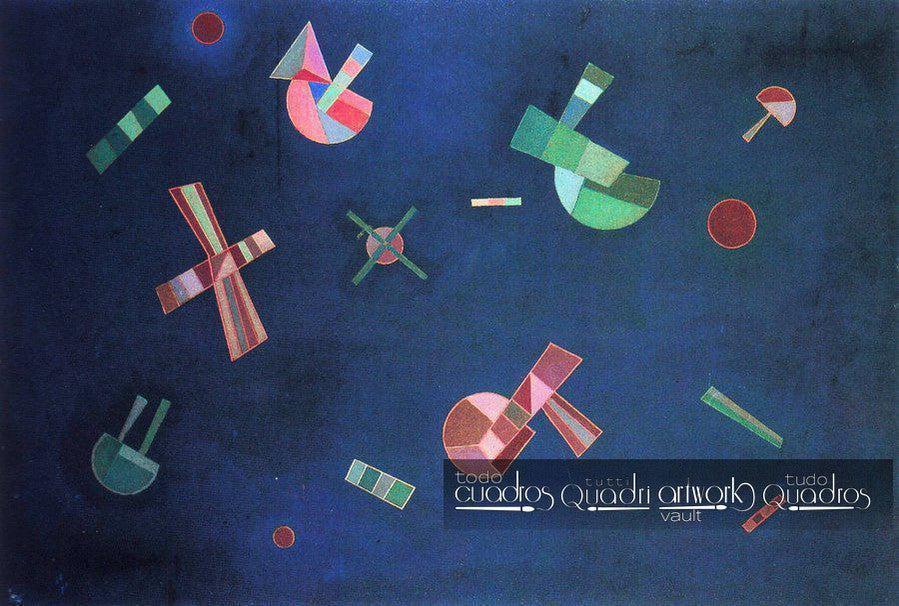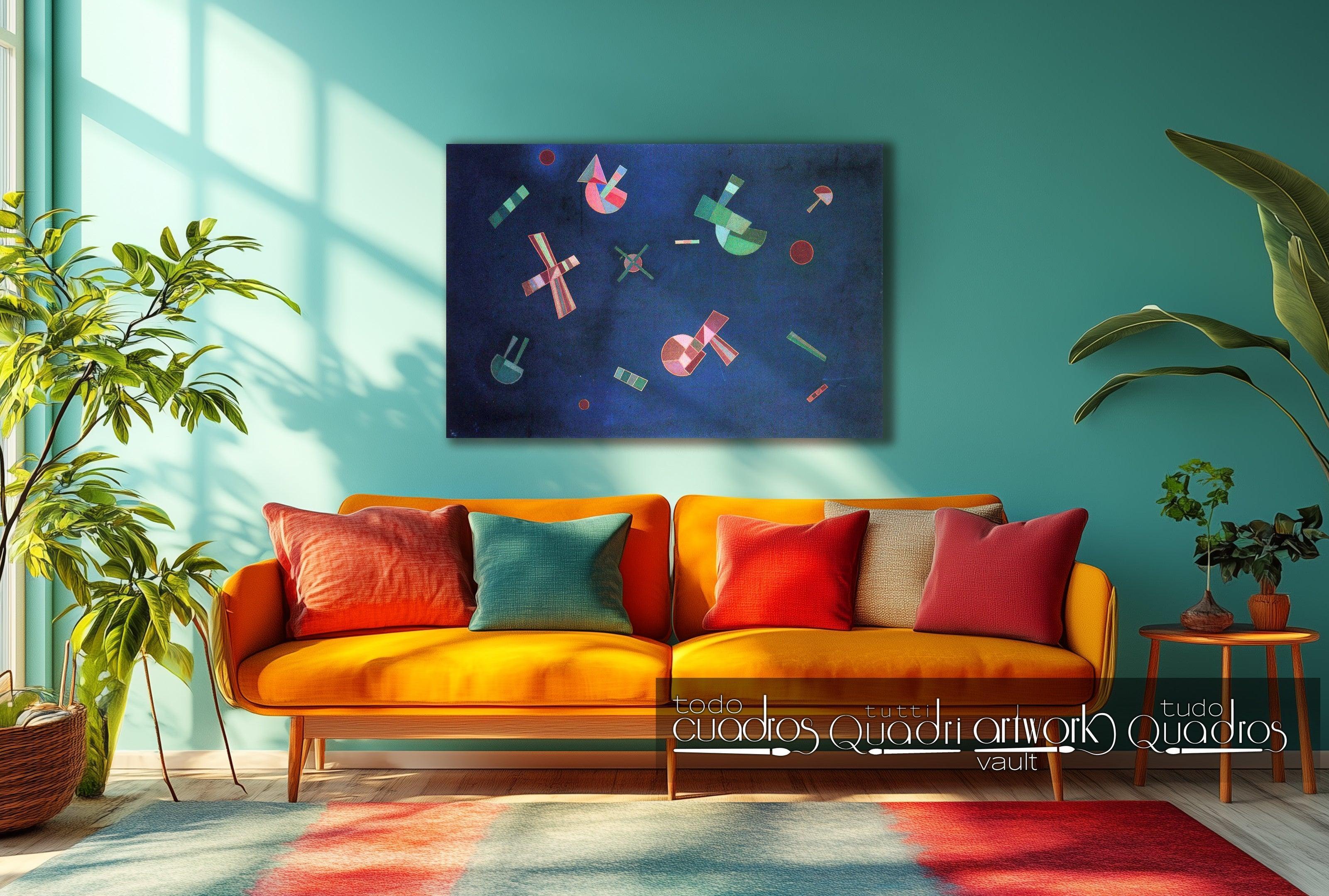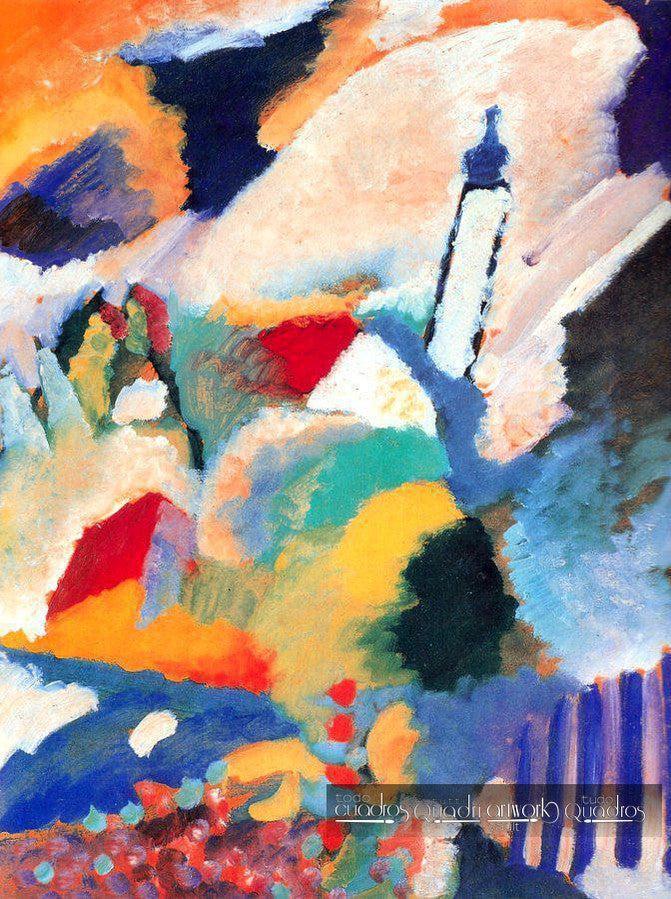Lyrical Abstraction
The term "lyrical abstraction" has been used at least 3 times in history to denote artistic movements and trends that have occurred in different epochs and places.
Traditionally in Spain and Spanish-speaking countries, "lyrical abstraction" refers to a sub-style of Modernism, considered the root of the abstract style itself. The pioneer of this branch and great model is the Russian Wassily Kandinsky.
-
 "First Abstract Watercolor"
"First Abstract Watercolor"
Work made in 1910, by Wassily Kandinsky considered the first painting of Lyrical Abstraction. This aesthetic, loaded with symbolism, movement, and color, will be the seed from where the artist will create most of his works during his career.
On the other hand, in the United States and English-speaking countries, lyrical abstraction refers to at least 2 artistic currents, the first linked to abstract expressionism, in the United States of the 40s, an example of this current is the work:
-
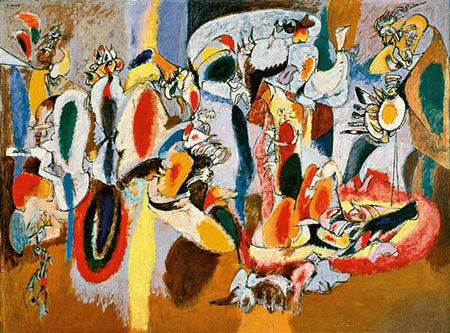 "The Liver is the Cock's Comb"
"The Liver is the Cock's Comb"
Oil painting made in 1944 by Arshile Gorky, an Armenian-born American painter, considered one of the most influential plastic artists of the 20th century.
The second in Europe from the second half of the 20th century, in the post-war Parisian atmosphere, a large number of new artists emerged claiming a new form of abstraction, examples of the paintings are:
-
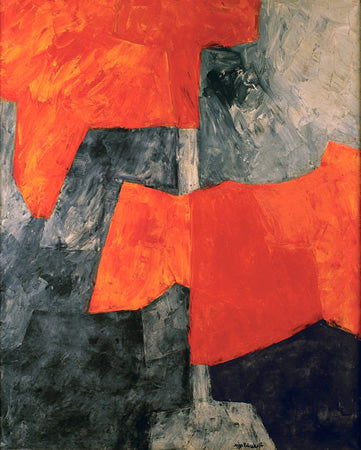 "Composition grise et rouge"
"Composition grise et rouge"
Oil on canvas painted in 1964 by the French Serge Poliakoff.
-
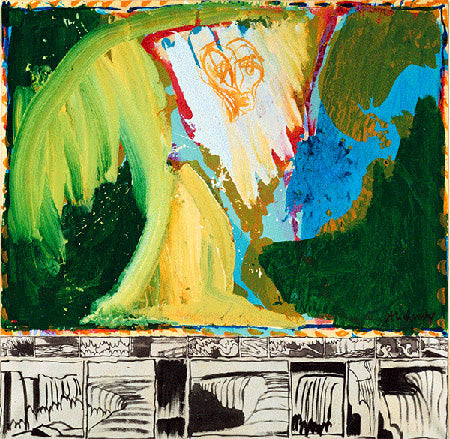 "Le Bruit de la Chute"
"Le Bruit de la Chute"
Work by Pierre Alechinsky, mixed techniques, made in 1974.
In general, although the origins and historical realities of these artists differ, they share the aesthetics of their proposal: strong and pure colors, dynamism, geometry merging with chaos, and guttural emotions.
Examples of the style for sale:



